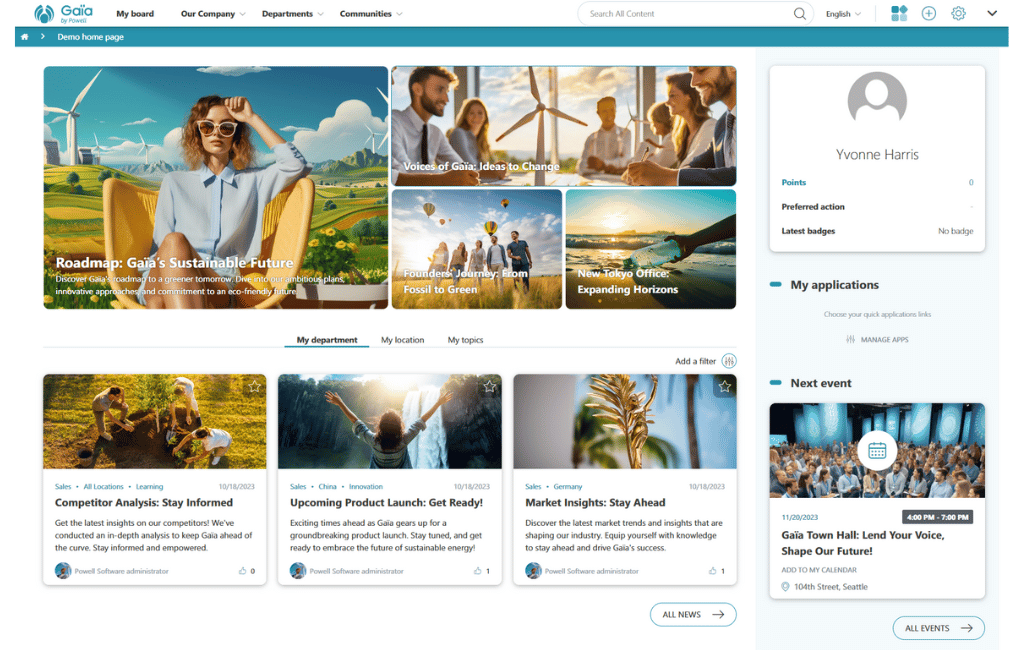Introduction to Intranet and Internet
The terms intranet and Internet are often used interchangeably, but there is a big difference between the two. An intranet is a private network that only users within an organization can access. On the other hand, the internet is a public network that anyone can access. An intranet is usually set up for a specific purpose, such as sharing information or files within an organization. It is not accessible to people outside the organization. On the other hand, the Internet is a global network of computers that allows anyone to access it.
What is an Intranet?
An intranet is a private network that is contained within an enterprise. It uses the same Internet Protocol (IP) standards and Transmission Control Protocol/Internet Protocol (TCP/IP) infrastructure as the public Internet, but its access is restricted to authorized users. An intranet can facilitate communication within an organization and share information and resources among employees.
What is the Internet?
The Internet is a global network of computers that allows users to communicate with each other and access information from around the world. The Internet comprises millions of individual networks, each with its collection of computers and devices. Users can access the Internet from anywhere in the world using various devices, including personal computers, laptops, smartphones, and tablets. The Internet provides users with vast information and resources, including news, entertainment, education, businesses, and more.
Why is it important to understand the difference between Intranet and Internet?
Understanding the difference between intranets and the Internet is important because they serve different purposes. Intranets are usually more secure and have more features than public websites, but people can only use them within an organization. Also, intranets are typically used for internal communication within an organization. This means that only people the organization has given access to can view and use the intranet. In contrast, anyone with an internet connection can access the Internet. Intranets are more secure than the Internet because they are not publicly accessible. This makes them less vulnerable to hacking and other security threats. However, this also means that if someone within the organization does manage to gain access to the intranet, they could potentially do much damage. In addition, intranets often have more features and functionality than public websites because they are designed specifically for use by an organization. For example, an intranet might include tools for collaboration, document management, and an employee directory.
Key Differences between Intranet and Internet
Accessibility
One key difference between the internet and intranets is that while anyone can access resources on the Internet, an intranet requires authentication – meaning that only authorized users can access its resources. This makes an intranet more secure than the Internet, as it limits who can see and use its information.
Security
Also an intranet is secure while the Internet is not. When you access an intranet, you are behind a firewall that protects your data from being accessed by unauthorized people. The Internet does not have this type of security, which means that your data could be accessed by anyone who knows how to find it.
Purpose
The Internet is a global computer network that allows for information exchange between devices. An intranet is a private network that is only accessible to members of an organization. An intranet is internal and only accessible to members of an organization. In contrast, the Internet is external and can be accessed by anyone with an internet connection.
Scalability
Also an intranet can be rapidly scaled up or down to accommodate changes in organizational needs, whereas the Internet is designed to be scalable from the ground up. This means that it can continue to grow and support more users without major changes or additions to the infrastructure.
Functionality
Furthermore, Another difference between an intranet and the Internet is that an intranet is a closed network, while the Internet is an open network. An intranet can be used to share company information and resources among employees, but no one outside the company can access it. On the other hand, the Internet can be accessed by anyone with an Internet connection.
Intranet in Organizations
An intranet is a private network that is contained within an organization. It uses the same Internet Protocol (IP) address scheme as the public Internet. Still, all components – including web servers, DNS servers, and routers – are privately owned and maintained by the organization. An intranet allows an organization to share information and resources among its employees securely. There are several benefits to using an intranet within an organization:
- Communication: An intranet can improve employee communication by providing a central place for announcements, news, and company directories.
- Collaboration: Employees can use an intranet to collaborate on projects, share files, and develop ideas.
- Productivity: An intranet can help employees be more productive by providing quick and easy access to the resources they need when they need them.
- Security: An intranet can help protect an organization’s sensitive data and resources from unauthorized access and misuse.
- Cost Savings: Intranets are often more cost-effective than traditional communication methods, such as printed materials or mailings.
Use cases for Intranet in organizations
There are different ways that an organization can use an intranet. Some common use cases include:
- Collaboration: Intranets can facilitate collaboration between employees within an organization. This can include sharing documents, posting updates and announcements, and holding virtual meetings.
- Communication: Intranets can be used as a communication tool between employees and management. This can include sending out company-wide announcements, providing a forum for employee questions and feedback, and posting company news and updates.
- Training and Development: Intranets can deliver training content to employees. This can include online courses, video tutorials, job aids, and other resources.
- Human Resources: Intranets can be used to manage employee data and records. This includes maintaining employee profiles, tracking vacation days and sick leave, and managing performance reviews.
- Document Management: Intranets can store and share documents within an organization. This includes policies and procedures, forms, and other important documents.
How an intranet improves internal communication and collaboration
There are many ways in which an intranet can improve communication and collaboration within an organization. For example, an intranet can create a central repository for organizational information and resources, making it easier for employees to find the information they need. An intranet can also create online communities where employees can communicate and collaborate on projects. In addition, an intranet can provide employees access to tools and applications that can improve productivity.
How Intranet can be used for knowledge management
Intranets can be used for knowledge management in a few different ways. One way is by using an intranet portal. A portal is a website that provides a single point of access to information and resources. Portals can be customized to meet the specific needs of an organization or group of users. Another way to use an intranet for knowledge management is document management software. Document management software helps organizations manage, share, and store documents electronically.
Internet in Organizations
The Internet has become an integral part of daily life for many people, and organizations are no exception. While the Internet is a public network that anyone can access, an intranet is a private network that is only accessible to members of an organization.
Use cases for Internet in organizations
There are many different ways that organizations can use the Internet. Some common uses include:
- Communicating with customers and clients: Organizations can use the Internet to communicate with their customers and clients. This can be done through email, social media, or websites.
- Research and development: Organizations can use the Internet for research and development purposes. This includes accessing online databases, conducting surveys, and using search engines to find information.
- Marketing and advertising: Organizations can use the Internet for marketing and advertising their products and services. This can be done through banner ads, pay-per-click advertising, or email marketing campaigns.
- Training and education: Organizations can use the Internet to provide training and education to their employees. This can be done through online courses, webinars, or eLearning platforms.
How Internet can be used for external communication and collaboration
The Internet can be used for external communication and collaboration in several ways. One popular way is through email. Email allows users to communicate with each other regardless of location. This makes it an ideal tool for collaborating on projects or sharing information. Another way to use the Internet for external communication and collaboration is through social networking sites like Facebook, LinkedIn, and Twitter. These sites allow users to connect, share information, and collaborate on projects. They are also a great way to stay in touch with friends and family who may be far away. There are many other ways to use the Internet for external communication and collaboration. These include video conferencing, VoIP (Voice over IP), online chat, and more. With so many options available, there is sure to be a solution that fits your needs.
How Internet can be used for e-commerce and online marketing
The Internet provides many opportunities for businesses to market their products and services online. E-commerce refers to the buying and selling of goods and services over the Internet and is a growing area of business activity. Online marketing includes various activities such as search engine optimization (SEO), pay-per-click advertising, social media marketing, email marketing, and more.
Businesses can use the Internet to reach a wide audience of potential customers at a relatively low cost. This makes it an attractive option for small businesses in particular. There are many ways to market a business online. The most effective approach will vary depending on the products or services offered, the target market, and available resources. Some of these ways include:
- Website: A well-designed website is essential for any business that wants to market itself online. The website should be easy to navigate, informative, and appealing to potential customers. It should also be optimized for search engines so potential customers can find the site when they conduct online searches.
- Social media platforms like Facebook, Twitter, and LinkedIn offer businesses powerful tools for reaching out to potential customers. Businesses can use social media to create engaging content that draws people in and encourages them to learn more about what they offer. Social media can also build relationships with potential customers and create a community around the brand.
- Email marketing is another effective way to reach potential customers and promote your products or services. By sending targeted emails with relevant
Conclusion
Intranets and the Internet are very different concepts with unique features, advantages, and disadvantages. While the intranet is an internal network used to share information within an organization and offers better security, the Internet is a public network accessed by millions of users worldwide for communication and business purposes. Businesses need to understand the differences between these two networks to make informed decisions about how best to utilize them for maximum efficiency. With this knowledge, organizations can determine which type of connection will be more beneficial for their needs and maximize its use to optimize operations.






